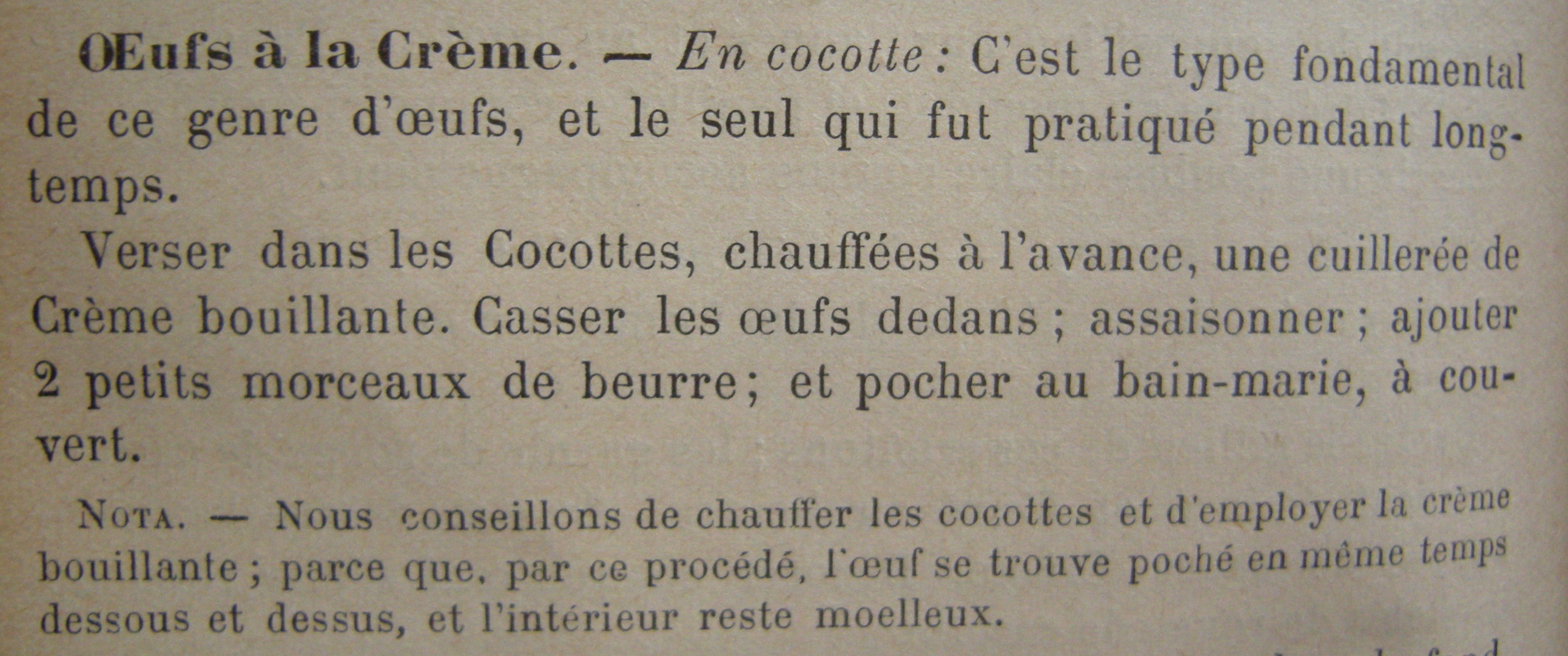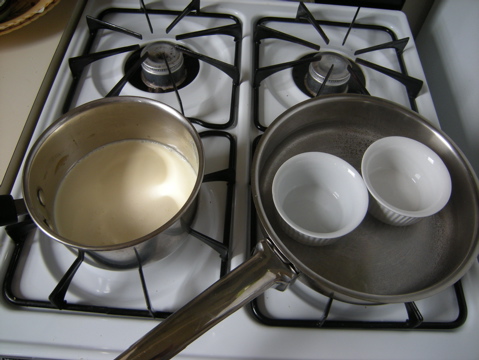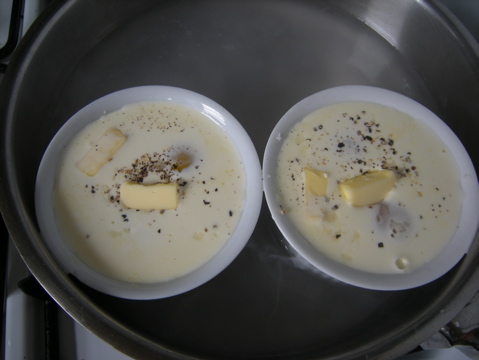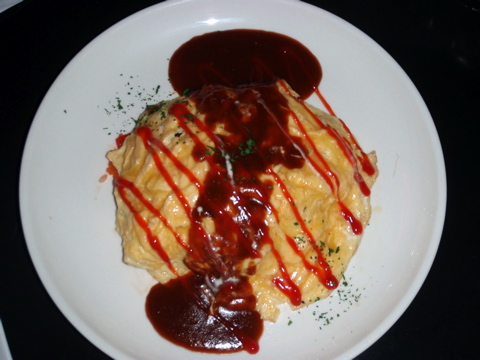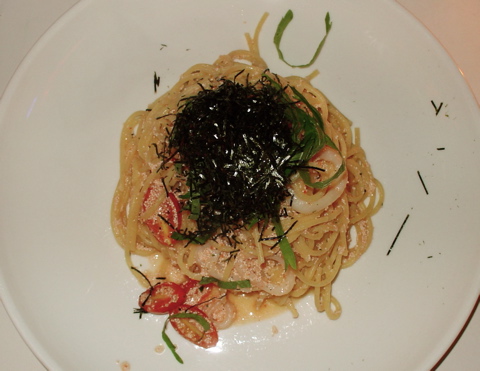
photo by Chiaki Matsumoto
Though Tarako spaghettis are part of Yoshoku food (Western influenced Japanese cuisine) it is interesting to note that this dish also has Korean influence.
Tarako is salted Alaskan Pollock roe, most of the time referred to as cod roe. Pollock and cod are member of the Gadidae family, but different genus & specie. The confusion comes probably from the fact that in Japanese, tara (鱈) means cod. Tarako spaghettis is often made with Mentaiko, the spicy marinated roe, and that is were the Korean influence comes into play. Mentaiko originated from myeongran jeot (명란젓) and was most likely introduced to Japan after World War II. Jeotgal or Jeot (명란젓) is used as a condiment in pickling Kimchi and has it’s origin in Chinese cooking. Tarako spaghettis is a transcontinental dish, just the way I like them.

Plain Tarako pix source from Wikipedia
The recipe is pretty standard and simple, depending where you live the most challenging might be to find the Tarako. Korean and Japanese market carry it, just make sure to avoid the ones with MSG and coloring.
This is the recipe I chose from: http://www.recipezaar.com/135630
Ingredients
- 2 fish roe, see note 1 (must be Japanese salted cod roe called tarako or karashi mentaiko)
- 6 ounces spaghettini noodles (or finer)
- 2 tablespoons butter
- 1/4 cup heavy cream (or less)
- 1/4 sheet nori, cut into tiny tiny strips
Note 1: a) Tarako comes in sausage-looking pieces
b)you can choose either the spicy kind (karashi mentaiko) or just plain tarako
c)you can find tarako at the Japanese grocery store, often it is in the freezer.
Directions
- Cut open the casing on each piece of tarako and gently scrape or squeeze out the roe.
- Discard the casings.
- Start your water to boil for the spaghetti.
- Melt butter in a skillet over medium heat. Reduce heat to low and add roe, stirring until the color of the roe changes to a pale orange.
- Stir in about half the heavy cream until well blended and heated through. As necessary, you can add the rest of the heavy cream.
- Turn off the heat and keep the sauce just warm.
- Don’t ask me why, but a friend stirs in a spoonful of Kewpie Mayonnaise before tossing this dish together (I love Kewpie mayo, but I haven’t tried this addition).
- Cook the pasta to al dente.
- Drain pasta and toss with sauce (sprinkle on the nori over the top just before taking the plates to the table) to serve.
Thank you Chiaki and Kenji to introduce me to Yoshoku cuisine!


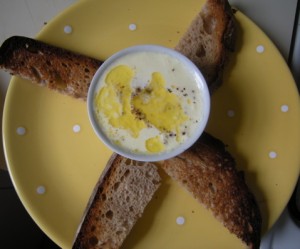
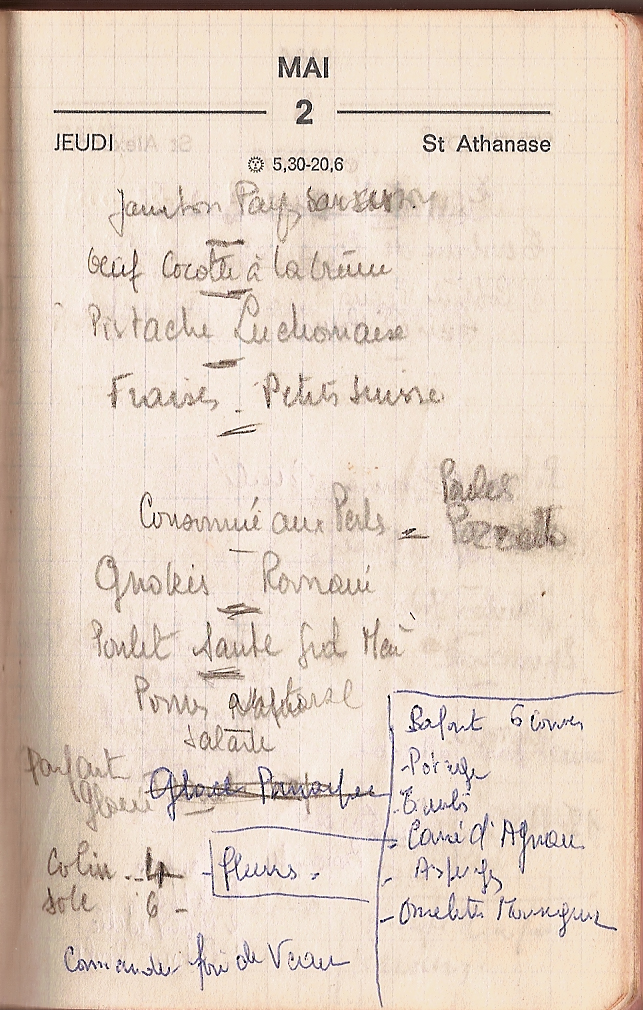 On Thursday May 2nd 1968 Oeufs Cocotte were served as the first course of the traditional five courses lunch menu. As you can see this lunch did not lack proteins!
On Thursday May 2nd 1968 Oeufs Cocotte were served as the first course of the traditional five courses lunch menu. As you can see this lunch did not lack proteins!